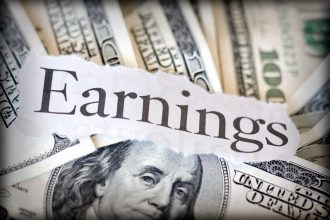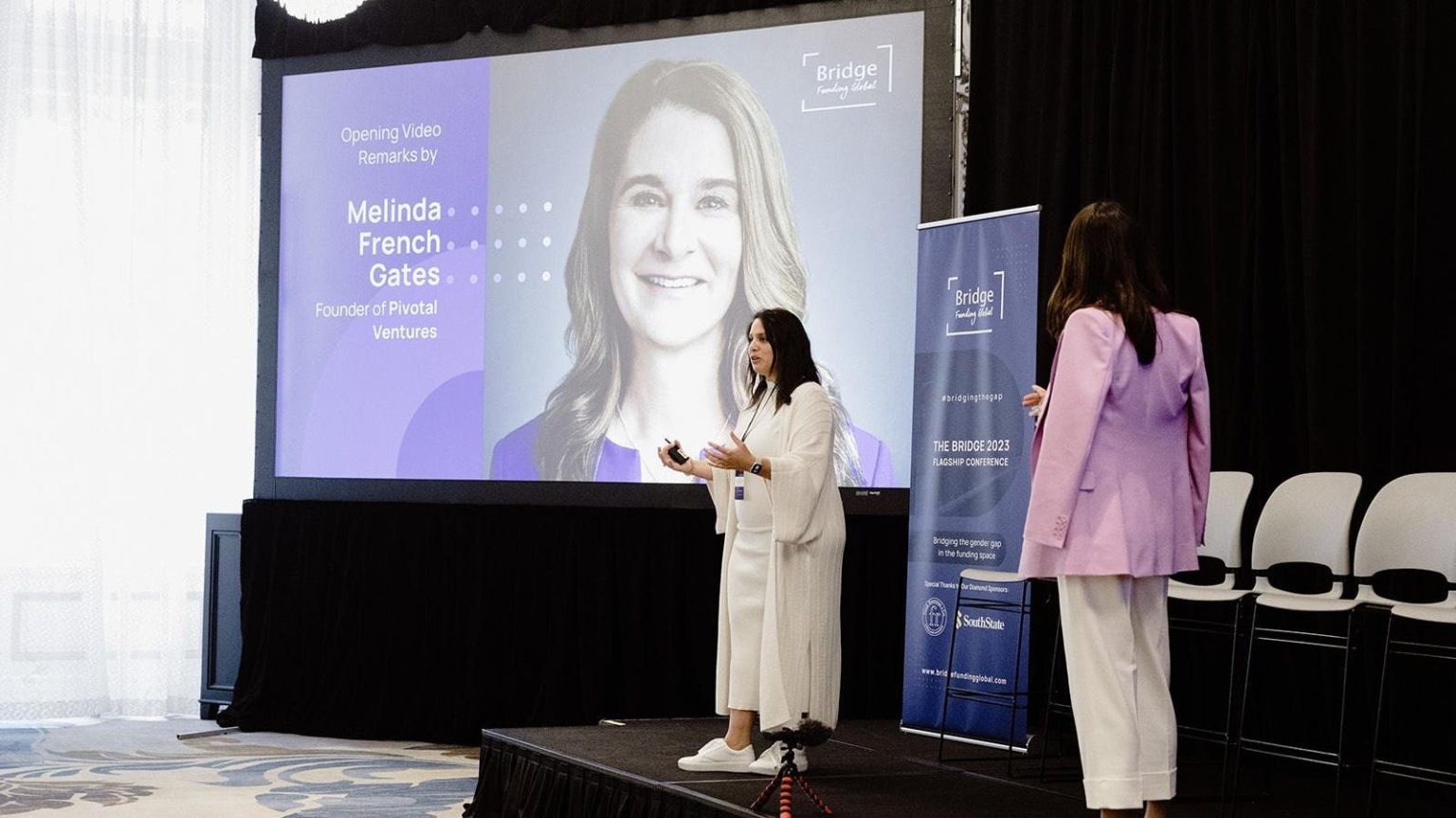“And when we studied how we could contribute, we landed on venture capital…because the inequity is so stark in this community and the stakes are so high.” In a video address, Melinda French Gates, one of the most powerful women in the world, spoke about how and why she came into venture capital: a move that led her to found her own firm, Pivotal Ventures.
Her remarks kicked off the annual Bridge Flagship Conference: a Bridge Funding Global event that brings together female GPs (general partners or those managing venture capital firms) and LPs (limited partners or those investing in GPs) to help address this “stark” inequity and these “high” stakes.
Today, American women control more than $10 trillion in assets: an amount that is expected to reach $30 trillion by the end of the decade. As a McKinsey analysis noted in 2019, that transfer of wealth into women’s hands is of “such magnitude that it approaches the annual GDP of the United States.” (As of 2021, the US GDP is over $23 trillion). Put another way, 44% of millionaires globally are female and 44% of ultra-high net worth individuals (those with over $30 million in investable assets) in the United States are women.
Despite female investors’ available funds – and their search for personally resonant investments – women still account for less than 15% of check-writers: the LPs who can invest in venture capital’s GPs. The lack of that powerful female presence trickles down: female GPs received only 3.3% of all capital invested by LPs in 2020 (and firms with only one female GP, rather than multiple GPs, received less than 0.025% that same year). And since venture capital firms with at least one female investing partner are twice as likely to fund female founders and three times more likely to fund companies with female CEOs than VC firms with all-male partners are, female founders – despite their superior performance to homogenous all-male teams – continue to receive less than 3% of all venture capital funding. In fact, in 2022, they raised only 1.9%.
As one Harvard Business Review article summarized, “Venture capital is a man’s game.” The male dominance in venture capital – and in the financial industry in general – keeps female LPs from funding female GPs from funding female founders.
However, organizations like Bridge Funding Global (known as the Bridge) are working to close that gender disparity, even taking its name from that very mission: to bridge the gap in funding. In the words of Sophia Platt and Emna Ghariani, its two co-founders, the Bridge aims to start at the top of the funding funnel: empowering female LPs and giving them a platform of female GPs to support. Increasing the number of female LPs (those writing checks) can, in turn, increase the number of female GPs (those receiving checks) which can increase the number of female founders and/or female-centric innovations being funded – and break the historic cycle of men funding men funding men.
Now, after three-plus years at the Bridge, Ms. Platt and Ms. Ghariani are sharing trends that they’ve noticed and the advice that they’d give to female GPs looking to fundraise from (female) LPs:
—
1. Build relationships
Ms. Platt and Ms. Ghariani note that many GPs, especially emerging ones, often underestimate the time that it takes to secure an LP investment – and the significance of building a long-term relationship in the first place. Some institutional LPs, which include college endowments, insurance companies, and sovereign wealth funds among others, won’t present a GP to the investment committee until the LP has known the GP for around three years. Ms. Ghariani emphasizes that emerging GPs particularly are “always fundraising”; as a result, they shouldn’t dismiss LPs that don’t make immediate investments but rather should invest in building a relationship early, knowing that it may pay dividends down the line.
And raising a small fund doesn’t necessarily guarantee a quick raise either; it can take two years to raise a micro-fund (a venture capital fund that is below $50M). Since the total amount of capital raised by micro-funds collectively has been shrinking since 2021, fundraising – even for small venture capital funds – has become increasingly difficult and building investor relationships over the long-term has become increasingly important.
That LP-GP relationship also continues after an LP investment has been made. For context, many venture capital funds have 10 year terms; that is, GPs hope to deploy all their capital within about five years and return it – with any additional gains – to their LPs within 10 years. In contrast, the average length of a first marriage in the United States is seven years.
One way for GPs to help build LP-GP relationships is to keep potential LPs informed. Newsletters, quarterly updates, and even quick emails with the latest updates are all ways to keep LPs excited and engaged about the GP, her presence, and her impact. These updates can also be tailored – for example, the GP might focus on her portfolio company’s test results or latest raise or revenue depending on the interests of the LP whom she is updating. Personalizing updates, rather than just sending one general update to all potential LPs, can help both the GP and the LP understand each other’s priorities, values, and areas of interest, and thus build a relationship before an investment is even made.
2. Highlight differentiators
Fundraising for GPs, put simply, is competitive. From 2018 to 2022 alone, 1,100 new venture firms were founded – but, from January to November of 2022, only 100 first-time funds launched successfully: a decrease from the 307 that launched successfully the year before. To stand out and to thrive in this competitive environment, Ms. Platt and Ms. Ghariani recommend that GPs learn what their differentiators are and how to highlight them to potential LPs – including strengths that may not be obvious. For example, while being a female GP may have once been seen as a risk in the male-dominated venture capital environment, a GP’s gender may now serve as a differentiator – and a benefit as well. Women in leadership or board roles, for one, have better mentoring and oversight ability, greater diversity of backgrounds, more innovation patents and citations, improved performance, increased accountability and oversight processes to manage innovation, and less corruption than teams that are all or mostly male.
Women have also shown to outperform their homogenous male venture capital peers. For example, 69.2% of the top-performing US VC firms between 2009 and 2018 had women in decision-making roles, and VC firms that increased the number of female partners by 10% experienced both a 1.5% increase in fund returns each year and exits that were 9.7% more profitable than they were otherwise.
Female founders are equally successful: women-led companies had 35% higher ROIs and 63% higher valuations than all-male teams and generated $0.78 revenue per dollar raised compared to all male teams’ $0.31 generated revenue.
The current economic conditions, including inflation and a possible future recession, may also be an unobvious and unexpected differentiator. Based on Ms. Platt and Ms. Ghariani’s experiences, LPs may still be willing to invest. They may even be, according to Ms. Ghariani, “bullish” on the funds started this year or next because they know that financial conditions are cyclical, not ever-lasting – and because past adverse market conditions haven’t hampered the successes of once-startups founded during recessions, such as including Apple, CNN, Disney, FedEx, General Motors, Groupon, Hyatt, IBM, Instagram, MailChimp, Microsoft, Pinterest, Slack, Trader Joe’s, Uber, and WhatsApp.
3. Knowing LPs are betting on you
GPs, especially emerging GPs, may still be skeptical about fundraising since they don’t have an investment track record that concretely proves their value to LPs. But, at this stage for GPs, Ms. Platt and Ms. Ghariani say, LPs might be betting less on the GP’s past successes and more on her future potential for successes.
GPs without an established track record can still demonstrate their worth too. They can share insights about their investment sector. They can highlight how they find deals and how they pick the best investments from their pipeline. They can communicate why founders come to them, how they support their portfolio companies – Ms. Platt mentioned that the LPs she knows “love” case studies in particular – and how they take their portfolio companies to the next level, such as achieving a new milestone, closing a round, or experiencing a liquidity event. GPs’ successes in these areas can help show off the unique and personal benefits that they bring as venture capitalists, even without a lengthy track record behind them.
—
Despite its potential, female representation in the asset management industry, which includes venture capital, remains starkly unequal. Over 98% of the $69 trillion US asset management industry is managed by men – and, if the current rate continues, it will take about 200 years for female asset managers to achieve equal status.
As Melinda French Gates said in her address at the Bridge Flagship Conference, “We’ve waited too long for the status quo to budge.” Organizations like Bridge Funding Global and individuals like Sophia Platt and Emna Ghariani are helping to move that status quo and, in the process, bridge the funding gap for female LPs, GPs, founders, and leaders of female-centric innovations alike. Through its platform, conference, and advice to female founders and funders, the Bridge is allowing women to recognize, actualize, and capitalize on the financial power of other women, including – but certainly not limited to – the $10 trillion dollars currently at their disposal.
Read the full article here




